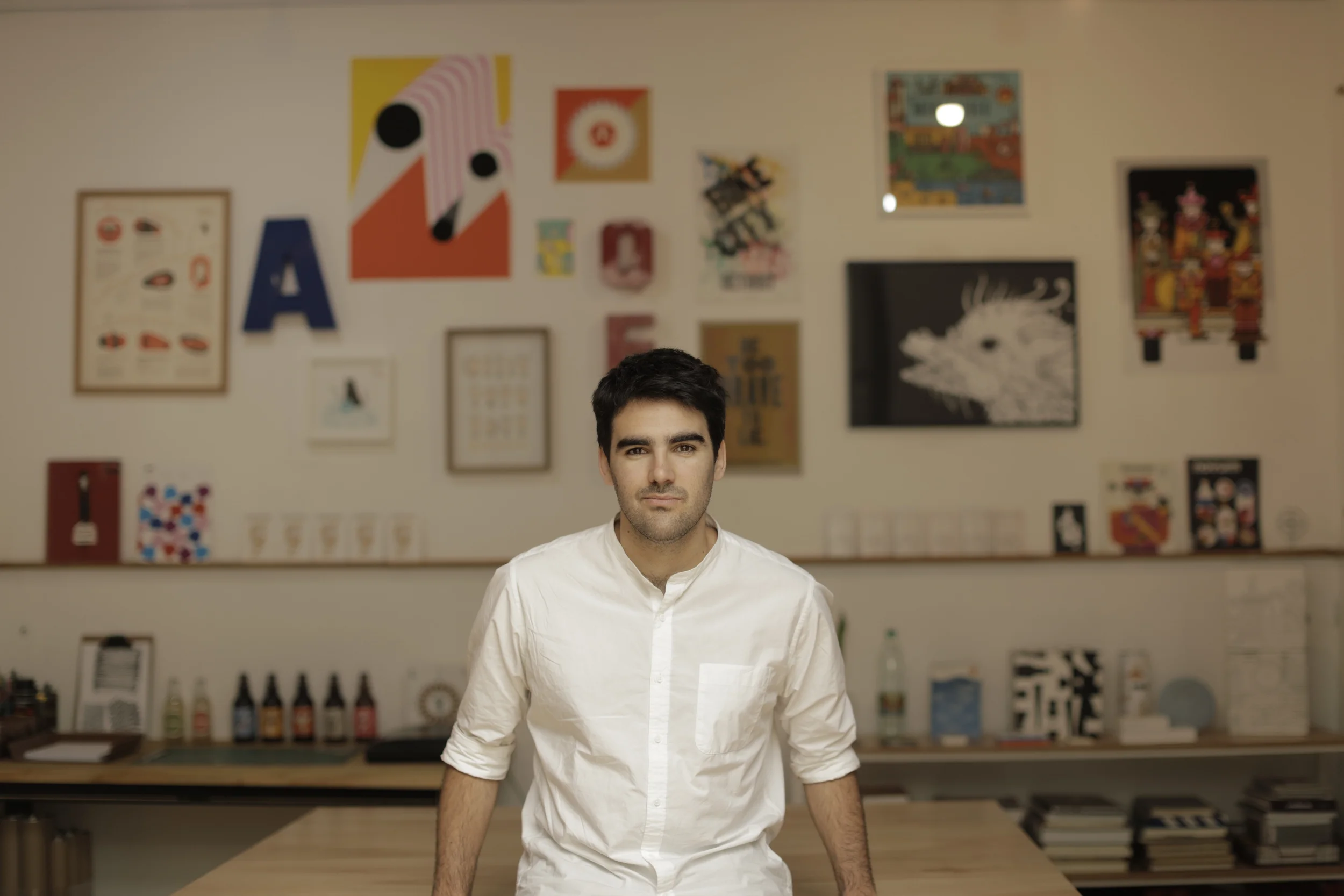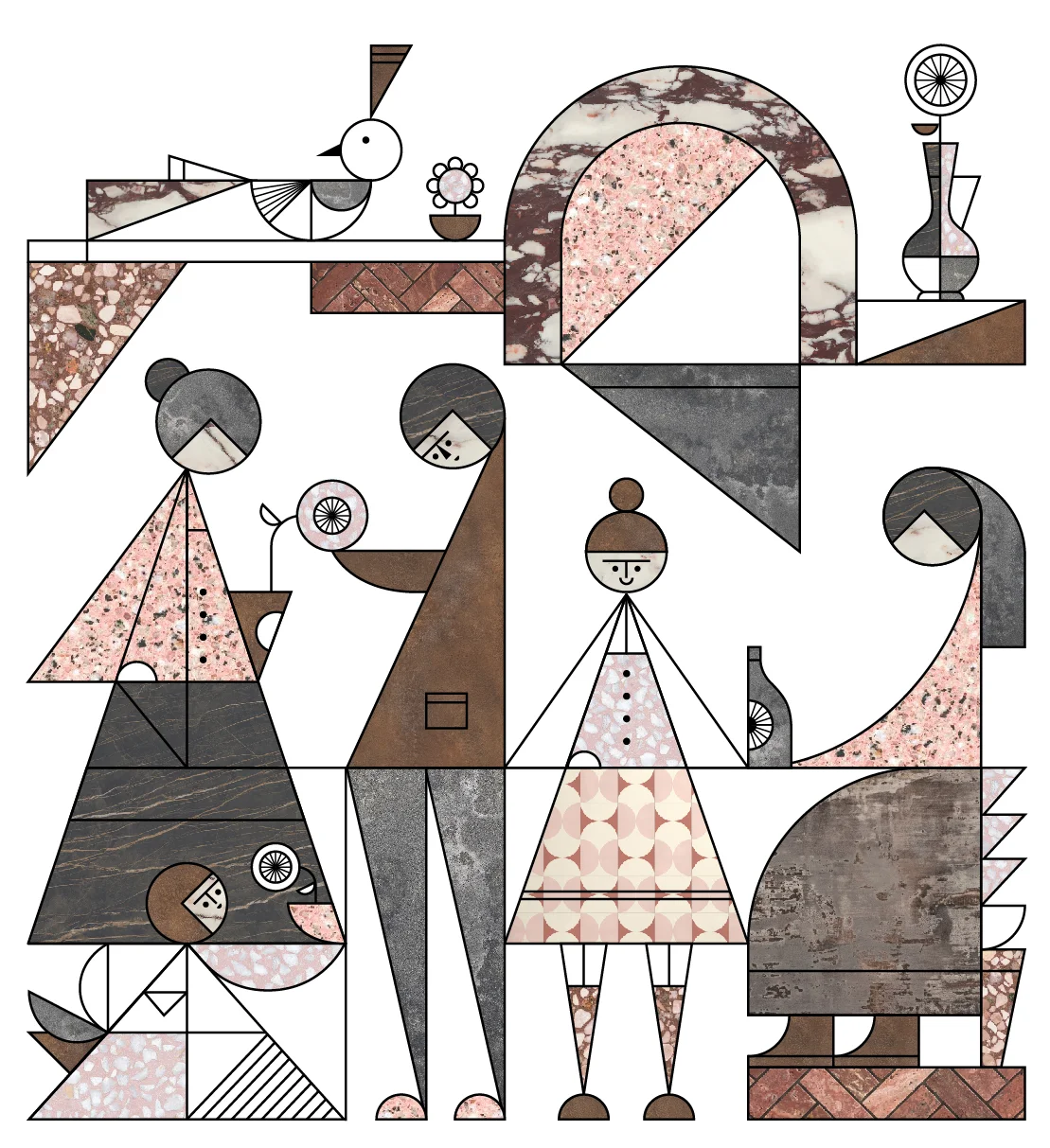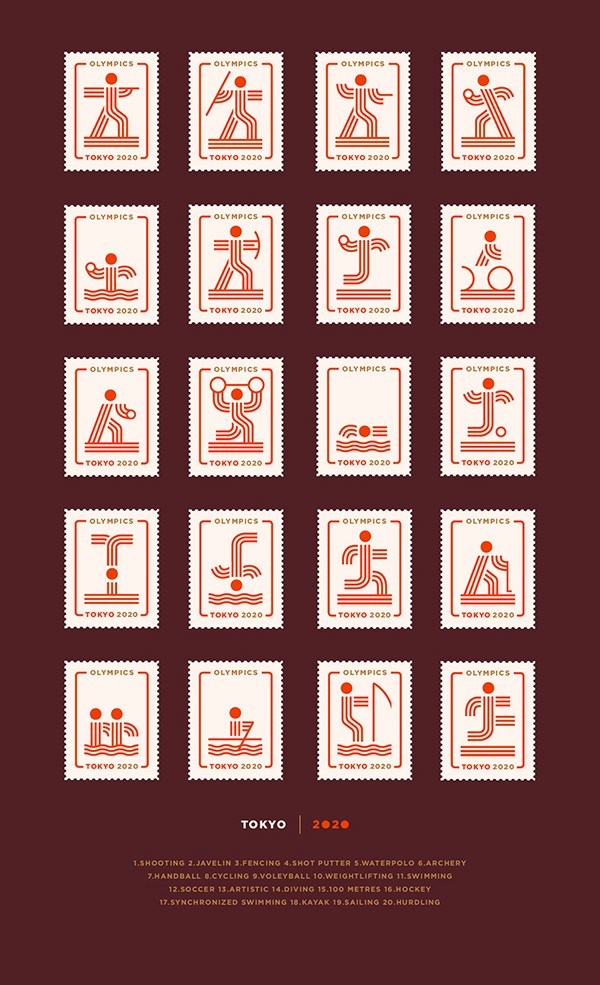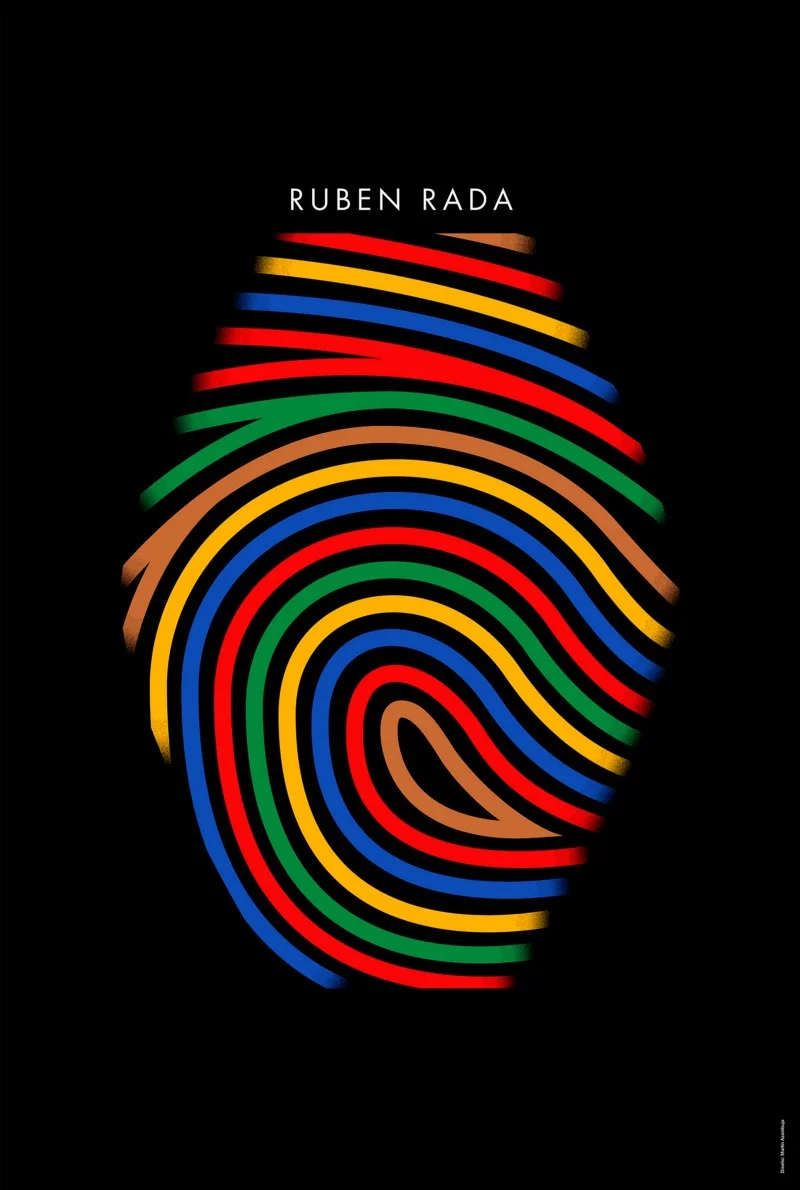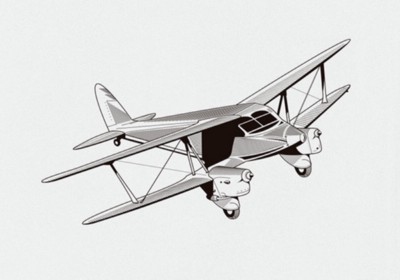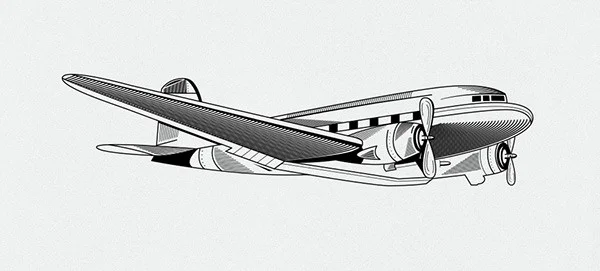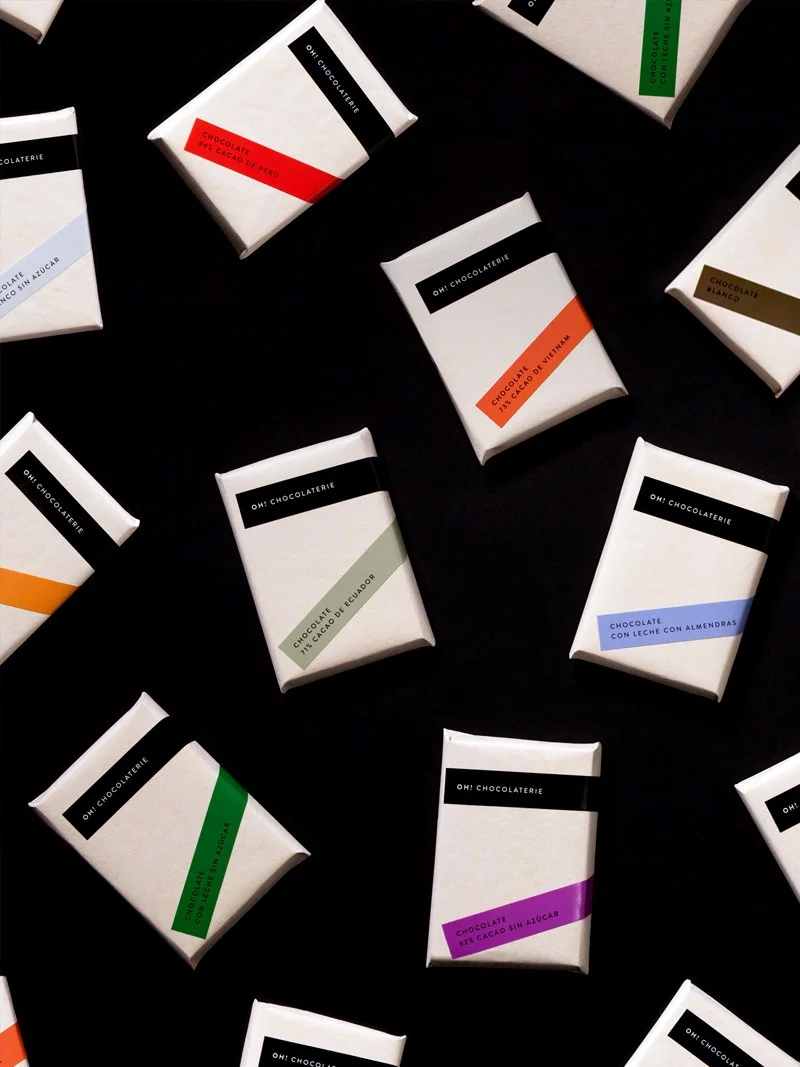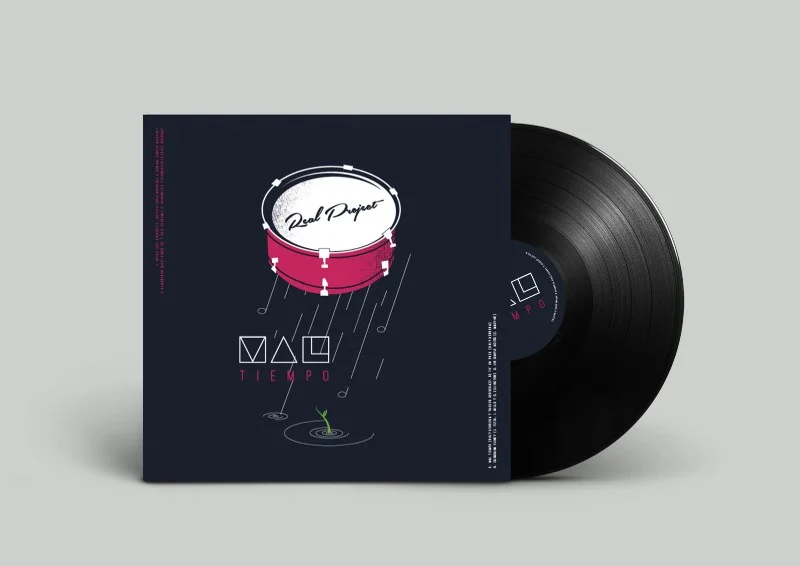On Personal Projects & Commissioned Work
An Interview with Uruguayan Graphic Designer & Illustrator
Martín Azambuja
Uruguayan graphic designer and illustrator Martín Azambuja might say he has no distinctive style, but his passion for creating is surely mirrored in his projects. To gain knowledge of his approach to design and illustration, I asked Martín a few questions on his personal projects and commissioned work.
You mentioned in a few interviews that your parents had supported your decision to study design. You’ve also once said that “[i]n our small country, many Uruguayan designers and illustrators know each other and have strong relationships”, and there is also the Conglomerate and Chamber of Design Uruguay (CDU) that supports designers and promotes them internationally. It seems Uruguay is a great place for creative professionals. Please briefly talk about its history and what this institution does.
Yes, that is all true what you’re saying, however, the creative industry is still growing. The CDU is a relatively new institution, and, with a lot of effort, it tries to promote activities that bring professionals, students, entrepreneurs, institutions, etc. related to the sector together. A few years ago an event called Design Month was organised and conferences, workshops, etc. were held.
In an interview, it is explained that the well-known Uruguayan artist Joaquín Torres-García’s work has influenced you. What should we all know about Uruguayan contemporary art & design?
Torres-García’s work is famous worldwide. Seeing his work as a boy, aesthetic questions emerged in me. It caught my attention that the elements on his paintings followed an order, told a story… Regarding contemporary Uruguayan design, I’d say, it is in progress. Studios are in search of their identity, and, in some cases, they show it to the rest of Americas and the world. Also, more and more government initiatives are launched to support entrepreneurs and boost their work, to encourage companies to request design and respond with quality jobs. As for the relationship with others working in different artistic or design fields, it is great. We know each other, and we are members of the same generation. It could be said that we are the third generation of Uruguayan designers. We try to get together often and get to know the things others are doing.
Vogue Australia
What position do you think Uruguayan design holds in the context of South America and in the world?
I still cannot find an answer to this question. I think it is because we still cannot speak of Uruguayan design as something characteristic or with a clear identity of ours. I hope this becomes clearer soon.
What do you think the biggest challenges and greatest opportunities designers in the region have?
Our challenge is to keep on developing our work in the local environment, to position it as well as to export it to other parts of the world. Meeting people representing other fields is also a must. Luckily, there are several events we can meet up. Just like the Trimarchi or LadFest.
Your guiding philosophy is to enjoy every project. Tell us about the greatest challenge you needed to overcome at some point in your life!
The biggest challenge was undoubtedly when I decided to work on my own. I did not have much experience in the different fields of art and design or knowledge of the local agencies. Everything was new, so I had to find work as well as manage my accounts, etc. I was lucky that several people trusted me with some of the first jobs and that way I was able to develop my work. I also took advantage of that period to experiment and showcase many works on international design and illustration platforms. This way I was able to get contacts in other countries, mainly in the USA, and work for abroad as well. Whatever you do, you compete with other illustrators from all over the word in a way, so you have to maintain a certain level and show seriousness and commitment. All this made me learn a lot. Today, the challenge is to keep improving and be able to take more integral projects, to be able to work in a team and keep on enjoying each project.
You’ve worked at a local ad agency for a while, now you’re a freelancer. Do you miss anything from that time? If so, what?
I worked at an agency while I was studying at the university. It was a very nice experience because I met very valuable people, with years of work behind them, and they taught me a lot. The thing I miss the most is the work with a large team of people. Nowadays, we are more or less doing it in the studio; setting up teams for the different projects and thinking together. Actually, we have our studio in a big house shared with other studios. It is key to interact, to know about other areas and not spend all day alone in an office or at home.
You’ve also launched a webshop. Do you think this is a necessity for an artist/designer to be able to establish herself/himself as an independent creative professional?
I do not think it is a necessity. In my case, the shop was a test; many people sent me e-mails asking me if I sold prints. I’d like to be able to sell them, and I also like the idea of people making them part of their day-to-day life, hanging them on walls, etc. I am interested in having the artwork become an object, occupy a space and live with people.
Stores
On your Behance profile, there is a project named Stores that was rejected by the client. What is the best way to handle situations like this?
It is something that usually happens; it is part of the game. Lately, I’ve been trying to discard things in the process so I do not have to start over again. Anyway, it is something that can happen. I recommend being very clear at all the stages of the process so there are no confusions and no one works too hard. Also, during the process, one needs to ask questions in order not to be left with doubts. It is important to be clear about what the client wants so the percentages of mistakes are minimal.
Besides commissioned work, you continue doing your personal projects such as Tokyo 2020. What are the main differences between working for a client and yourself?
There are many differences. From the beginning, when working for yourself, you have the freedom to raise the idea you want and think about the execution. There are no deadlines to meet, one responds to him- or herself. It also allows you to experiment with new processes and techniques that you can then use in commissioned jobs. I think personal projects, in some cases, make us play again, go back to the basics, and have fun.
Your portfolio demonstrates your affinity to work on various types of projects. It doesn’t matter whether you create packaging, illustrations, identities, editorial, etc. How does your work method need to change from work to work?
Speaking from the conceptual point, all work is the same. I gather information about the project, investigate as well as see what the problems are to solve, have discussions with clients, listen to them, and see what I can contribute. It is obvious that each job varies in a practical way. It is not the same to make a packaging, a book or an identity. I like working on different projects, because each process makes you learn new things.
Regarding the project Vector Planes, you write: “This style isn’t my regular ‘style’, but having fun doing them.” They are not even orange! How would you describe your style?
Honestly, I do not think I have a certain style. I mean something very characteristic that when you see it you can tell that it is my work. I do believe that I have a style concerning certain more macro decisions such as in terms of the clean use of forms, clean and tidy composition as well as vibrant colours co-existing. These are the starting points I usually incorporate into any job.
Looking at your different projects, what becomes noticeable is that the outcome of your work usually includes processes and movements. How conscious is that?
I’m honestly not aware of that. In each job, I try to represent it in the best possible way and make decisions that favour what I want to communicate. In any case, I have always been attracted to technical and geometric drawings. This is maybe why, in some cases, they seem to be explanatory.
Oh! Chocolate
This also applies to the project Cambridge University Dictionaries, about which I have to ask you, since I work with words and love dictionaries. Please tell us about the concept and the design process.
In this particular work, something very clear had to be communicated. It became possible to access the CU dictionary using three platforms such as printed books, desktop and mobile. The idea was to show this in an illustration, so I chose to illustrate the user in these three possible situations. This composition also allowed me to decompose the parts and use them separately in different printed materials. This was also part of the initial idea.
Cambridge University Dictionaries
When working on the project To Resolve Project 2014, you put the computer away, and you did it manually. How often can you make your hands dirty?
I try to always work on something manual in parallel to the digital projects. It can be with collage, tempera, etc. In my house, I have a room/studio where I can work on my personal projects. As I’ve said before, it is good to experiment because I can take advantage of some of the results and use them in a commissioned project.
I’ve worked on a series of “murguistas”, the protagonists of the Uruguayan Carnival, for example. The murga is a musical group composed of approximately 17 people who sing together about what has happened in the year, the reality of our country, etc. I’ve always loved the colour of their clothes and now I’ve taken them as a source of inspiration for a series of illustrations with tempera.
Murga
You named Stefan Kanchev, Cruz Novillo, Alexander Girard, Yusaku Kamekura and Shigeo Fukuda as your biggest influences. However, you’ve also mentioned that you don’t like when clients give you references. I’m wondering how easily one can absorb his/her influences meanwhile creating something fresh and new. Is it possible to be unique in today’s world?
The references are good in terms of getting to know the clients better and being able to figure out what they want. Influences are for different things: from the thought and ideas to the graphic resolution. Alexander Girard is one of my favourites because of his versatility and ability to work on different projects with incredible results. As for Japanese designers, I have an admiration for the use of simple shapes in a complex way. There is a rationalization in their designs and also an economy of resources to get to communicate very complex things. I also admire Kanchev and Novillo for their versatility, and their work in the field of brand identity; they are great exponents of a golden generation of graphic designers.
You’ve worked with charities, too. What responsibilities do you think artists, designers, illustrators or other creative professionals have when it comes to addressing social, societal, economic or political issues?
I think more about this every day. The communication has moved to a terrain, namely the digital terrain, in which designers feel very comfortable. That is why we have the chance to let our voice heard and replicated immensely. We have the possibility to reach out to many through our work. There have been some cases lately, series of attacks when an image made by an illustrator has been replicated and ended up being on the flag carried by many people. No doubt it is a way to be involved.
Magnolia
What have you worked on recently?
We’ve worked on the brand identity of a platform that links organic producers with people interested in consuming quality food, and therefore having a good quality of life. We’ve also worked on the identity of a local café that brings grains from all over the world, refreshment with natural herbs, a complex of houses on the outskirts of my city, and some little things.
Apart from this, in my facet of freelance illustrator, I’ve worked on some illustrations for London, for the brochure of a security company that wants to explain its services through drawings. I’ve also finalized the details of a book cover about drinks. A very fun project indeed!
What are your plans?
Fortunately, we’re able to develop our studio a little bit and show the work we have been doing there. I truly feel that our work has quality and it is deserved to be seen. We’ve never been updated our website before, but the time has certainly arrived. We are also keen on improving the work processes and trying to give a better service to our customers. But the main plan beyond all this is to keep on having fun in what we do and go to the studio with the same desire and enthusiasm.

